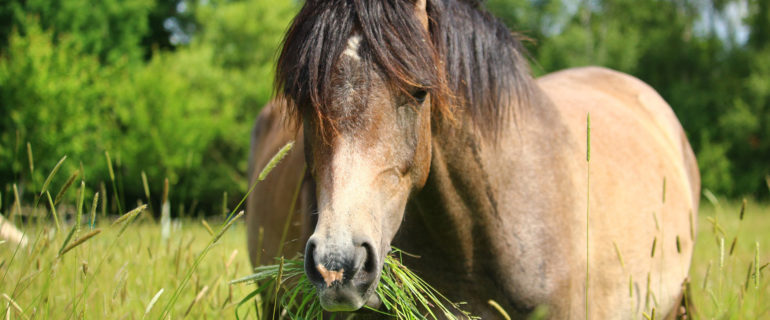We are at that time of year where the spring grass is coming through and that laminitic prone horses, ponies or donkeys are at risk. As owners, it is vital that we understand and recognise laminitis and the signs they may present.
Laminitis is a common and extremely painful condition that affects horses, ponies and donkeys; roughly 1 in 10 horses and ponies are affected every year. The condition affects the laminae in the hoof that bond the pedal bone to the hoof wall. In turn, this can result in the pedal bone rotating or sinking within the hoof.
Signs of laminitis:
- Lameness – worse on hard ground or turns
- Leaning back onto their heels to take the weight off of the painful toe area
- Shifting their weight between feet when at rest
- Increased digital pulses
- Pain when hoof testers are used at the point of frog
- Divergent hoof growth rings
It is important that if you have a horse, pony or donkey that is prone to laminitis, that you take preventive measures before they have a laminitis flare-up. These measures can include:
- Ensure that they are fed a well-balanced ration appropriate for their type, age and activity levels
- Restrict access to lush pasture, especially during the wet spring months due to the rapid growth of sugary grass
- Ensure that they receive regular trimming/shoeing from a reputable farrier
- Seek veterinary treatment if you suspect your horse, pony or donkey is unwell
Maintaining the diet
The diet should consist of poor quality hay fed at 1.5% of the horse’s body weight and if its necessary, the hay should be soaked to remove as much of the water-soluble carbohydrates as possible. Haylage should be avoided as when consumed it produces more insulin compared to hay, also, as haylage is more palatable, horses tend to eat more.
Fibre-based produces that contain chaff or unmollassed sugar beet can be fed in replacement of the hay ration. In addition, if more energy is required once the laminitis has been resolved, then oil can be added to the diet. It is important that concentrate feeds based on cereals should be avoided as they are high in carbohydrates.
Did you know?
- An apple contains roughly 13g of sugar
- Excessive exercise on hard surfaces can cause laminitis due to concussion
- Soaking hay for 16 hours results in the highest water-soluble carbohydrate reduction (27%)
- Frosty grass is just as dangerous as lush spring grass
- Once an individual has had laminitis once, they are more at risk of suffering recurrent episodes

